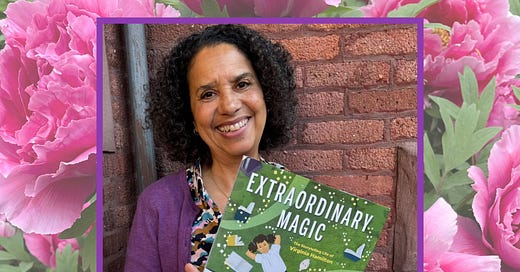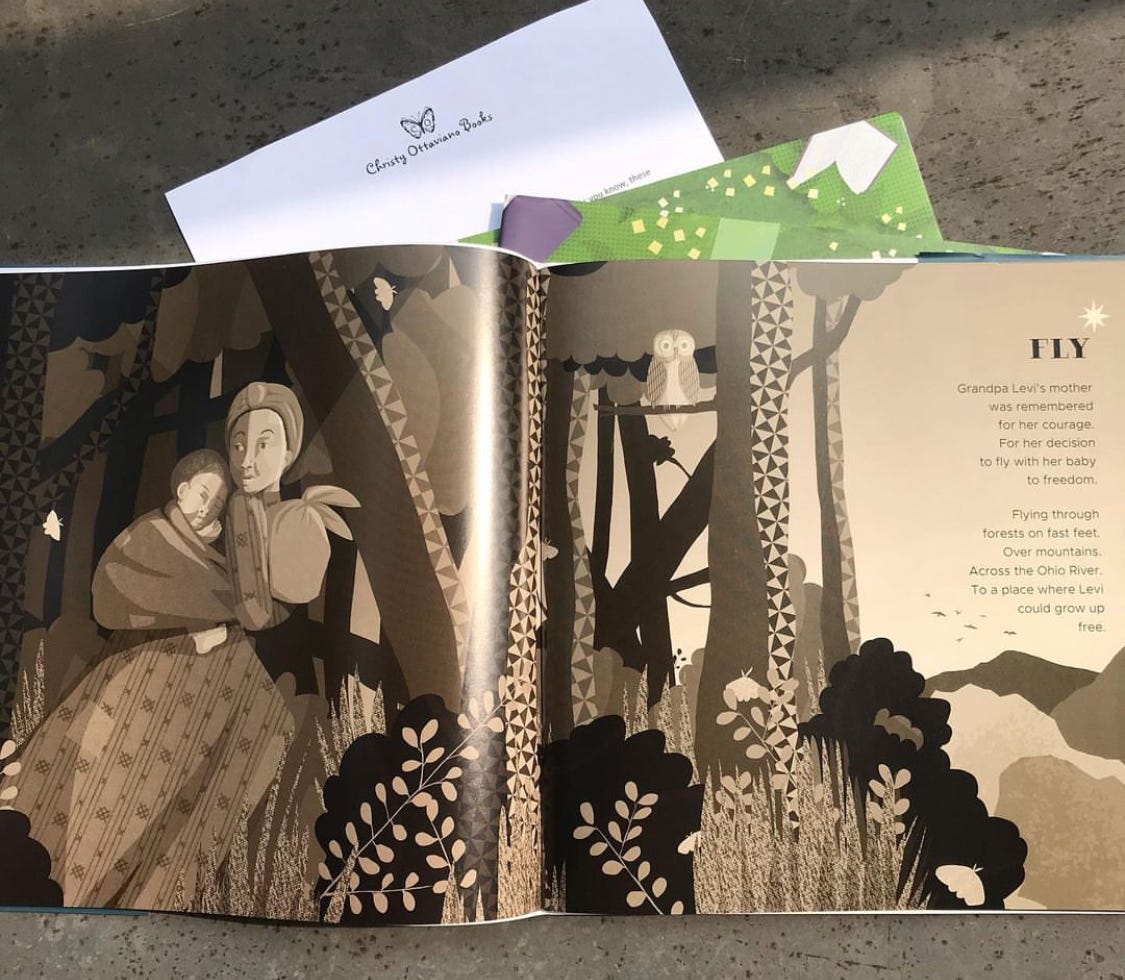Nina Crews on How the Textures, Architecture, and Nature of Park Slope Show Up in Her Signature Illustrations
Plus the workhorse product you can use for "just about everything" that's less than $2, and Nina's favorite things to see, eat, and do in Park Slope!
Hi! How was your week? We had brunch with friends last weekend and they made challah French toast, which I’d never had before. It was delicious. Here’s the recipe, if you’re interested. Okay, on to this week’s interview and recommendations!
One way I find people to feature here on Park Slope Times is through local online social groups. Members pose questions to the group about all sorts of things — Anyone selling firewood? Do you have a weeknight babysitter you’d recommend? Where can I donate winter boots? — and the answers come flooding in. On a recent afternoon, a thread about local authors caught my attention, and the name Nina Crews was mentioned several times.
Nina is an award-winning children’s book author and illustrator and a long-time resident of Park Slope. She won the 2023 New York State Library Association's Empire State Award, and her work has also been recognized by the ALA Notable Committee, the Black Caucus of the ALA, The Horn Book, Junior Library Guild, New York Public Library, Chicago Public Library, and many others.
Today, Nina talks about her new children’s book, “Extraordinary Magic,” which came out on January 9th, and her dynamic illustrations. Plus, she shares her Park Slope favorites, including a used bookstore, delicious apple turnover, and where she buys her running shoes.
Hi Nina! I’d love to start by talking about how some of your books are rooted in Park Slope, in Brooklyn. They feel like a celebration of the children in the neighborhood in many ways.
The main group that was in “The Neighborhood Mother Goose” were people who live in and around Park Slope, and “Neighborhood Sing-Along” as well. Most of the network of families that I knew back then were the friends of my sister’s oldest child and some children and people that I knew in the neighborhood. All of these young people then became part of those stories, and that was a really fun part of a Brooklyn-centered book.
Most of those people are now in college or finished with college, and for me, having done so many books where I photographed children, I have this long timeline of seeing them as grownups, too. That's always been a wonderful part of it.
Are you always making mental notes while observing life here in Park Slope to use later in your books?
It's hard to separate it out from the day-to-day things that I see around me that might inspire me, but what I would say I definitely incorporate very directly into my work is the textures, the architecture, the spaces of Brooklyn. I go around with my camera and photograph different areas of stoops, walls, different things that become part of my collages. And then I use Prospect Park quite a lot too. In the book “Seeing into Tomorrow” Haiku by Richard Wright I was looking to create a more natural place, a place that might not be a city scene, and I found that within Prospect Park. You can find places that feel quite wild and away from people there, which is one of the nice things about that park.
Your parents, Ann Jonas and Donald Crews, are talented writers, and your father is an illustrator as well. Did you grow up wanting to follow in their footsteps? Did their work inspire you to pursue your career?
My parents' books are fantastic and the example they set is inspiring, though I didn't expect to follow so closely in their footsteps when I was younger. After college, I was interested in fine art photography and found paying work in animation production and occasional editorial illustration. It was a start, but I wasn't really getting everything I wanted creatively. My father would often encourage me to consider books, but I didn't really seriously think about it until I had some ideas about how I might make something that really felt mine. Once I knew myself better as an artist, I was ready to take the plunge.
Your illustrations have a signature style. They’re beautiful! How do you get that look?
I do my illustrations in Photoshop. Not so much for photography but I use the program as a tool to create collages, which are a combination of colored shapes and patterns. I do figurative drawings and fill in those drawings with the patterns and colors.
In my earlier books, I printed everything out, and then cut and pasted to create collages by hand. I primarily worked with photography and camera. A good friend I worked with in animation production encouraged me to look at Photoshop. So I finally got a decent enough computer and all the tools I needed, and I would just call him every day when I had a question. He was a great teacher.
Congratulations on the release of “Extraordinary Magic”! This book is nonfiction, which is a new genre for you. What was it like writing a nonfiction book for children?
The book is about Virginia Hamilton, who was a children's author who wrote more than 40 books. Mostly novels, a couple of nonfiction titles, and a few picture books. Starting in the 1960s, she won every award that you could win as a writer of children's books — Newbery Honors, the Coretta Scott King Awards, The Boston Globe Book Award, the Hans Christian Andersen medal, which is an international award, among others. She was a Black woman from Ohio and her success, I think, helped create space for so many authors and illustrators working today. So it's great to launch this book.
This was my first experience writing a nonfiction book, which is exciting for me — writing a biography of someone. It's interesting to work in the realm of facts, so clearly and so directly. I wrote it in a series of poems. Each page spread has a poem, which is centered around a word that expresses something about Virginia. The first poem is about her name, Virginia, and [the state of] Virginia being the place where her grandfather was enslaved. His mother took him to his freedom in Ohio when he was about two years old, so he wasn't there for long. But it was important to carry that history forward, and so that became her name, and each poem in “Extraordinary Magic” works with that.
[Ed. note: Nina has an in-store book signing event at Books of Wonder in Manhattan, on February 24. She’s also participating in an all-women artist exhibition to celebrate Women's History Month at the Corner Gallery in Industry City. There's a reception on March 6 for this exhibition, and Nina’s books will be available for purchase.]
You express complex parts of life and history in your writing in a very approachable way for children.
Keep reading with a 7-day free trial
Subscribe to Park Slope Times to keep reading this post and get 7 days of free access to the full post archives.









